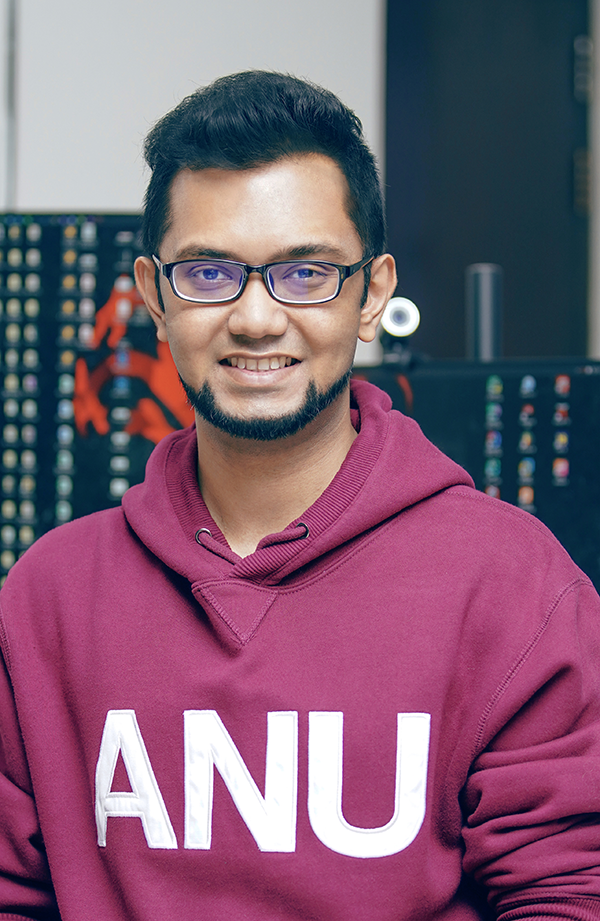
I am a PhD Candidate in Biomedical Engineering and Imaging Sciences. My research focuses on applying machine learning models to computational cardiac models to extract biomarkers from medical images for disease stratification. More specifically, I am studying the role of the cardiac right ventricle for risk assessment and intervention planning for patients going through mitral valve replacement. I am jointly funded by the EPSRC Center for Doctoral Training (CDT) in Smart Medical Imaging at King's College London and Philips Research I have a Masters's degree in Machine Learning and Computer Vision from the Australian National University and an MRes degree from King's College London focusing on Medical Artificial Intelligence. I specialize in Deep Learning, specifically in Generative Adversarial Networks (GAN). I have interests in various Computer Vision techniques, i.e. Human Pose Estimation, Image Style Transfer and Human Centered Computing. I also have strong communication, management, leadership skills.
Education
Research Topic: The right ventricle’s role in risk prediction following mitral valve replacement: a combined imaging-modelling study.
Supervisor 1: Dr Adelaide De Vecchi, Lecturer in Computational Cardiovascular Modelling, School of Biomedical Engineering and Imaging Sciences, King's College London
Supervisor 2: Professor Pablo Lamata, Wellcome Senior Research Fellow, School of Biomedical Engineering and Imaging Sciences, King's College London
Clinical Champion: Professor Ronak Rajani, Professor of Cardiovascular Imaging, King's College London; consultant cardiologist in heart valve disease, Guy's and St Thomas' NHS Foundation Trust .
Industrial Supervisor 1: Dr Valentina Lavezzo, Team Lead Biophysics models of patients presso, Philips Research
Industrial Supervisor 2: Dr Caroline Balemans, Scientist Computational Biophysics - Philips Research
Supervisor 1: Dr Adelaide De Vecchi, Lecturer in Computational Cardiovascular Modelling, School of Biomedical Engineering and Imaging Sciences, King's College London
Supervisor 2: Professor Pablo Lamata, Wellcome Senior Research Fellow, School of Biomedical Engineering and Imaging Sciences, King's College London
The Australian National University, Canberra, ACT, Australia
GPA: 6.88/7.00 (Distinction)
Thesis: Privacy of Biometrics using Generative Adversarial Networks (GANs).
Supervisor: Professor Tom Gedeon, Professor of Computer Science and Head of the Human Centred Computing (HCC)
Details: I am using a conditional cycleGAN to analyze and filter out certain information (i.e. disease status, stimulus etc.) using a conditonal cycle consistent generative adversarial network.
Significant Courses:
i) Neural Networks, Deep Learning and Bio-Inspired Computing,
ii) Advanced Topics in Machine Learning,
iii) Advanced Topics in Computer Vision,
iv) Statistical Machine Learning,
v) Advanced Topics in Mechatronics Systems (Convolutional Neural Networks),
vi) Engineering Data Analytics,
vii) Optimisation,
viii) Document Analysis (Information Retrieval and Natural Language Processing)
Degree Certificate: View
Australian Centre for Robotic Vision, Canberra, ACT, Australia
Achievement: Best performing group in the Adelaide Node.
Certificate: View
Middlesex University, London, UK
Result: 1st Class Honours (Distinction)
Honours Project: Image to Image Translation Using Cycle Consistent Generative Adversarial Networks (CycleGAN).
Supervisor: Dr David Windridge, Professor of Data Science and Machine Learning
Details: I analysed the importance of various losses, i.e. cycle-consistency, identity etc. for Cycle-GAN training in the domain of unsupervised image style transfer.onsistent generative adversarial network.
Significant Modules:
i) Artificial Intelligence,
ii) Image Processing with MATLAB,
iii) Industrial Networking
Appreciation Letter: View
Degree Certificate: View
North South University, Dhaka, Bangladesh
Status: Incomplete (Transferred to Middlesex University)
Work Experience
The Australian National University, Canberra, ACT, Australia
Supervised Courses:
i) Neural Networks, Deep Learning and Bio-Inspired Computing,
ii) Introduction to Machine Learning,
iii) Computer Networks,
iv) Software Engineering
Role: Conduct lab/tutorial sessions and grade students' homeworks, assignments and exams.
Publications
-
Abhijit Adhikary, Namas Bhandari, Evan Markou and Siddharth Sachan. ArtGAN - Artwork Restoration Using enerative Adversarial Networks. In 2021 13th International Conference on Advanced Computational Intelligence (ICACI), pages 199-206, 2021
Paper: https://doi.org/10.1109/ICACI52617.2021.9435888
Code: https://github.com/namas191297/artgan
More Details: Click here -
Abhijit Adhikary and Namas Bhandari. PosEmotion - Combining Real-Time 2D Body Pose Estimation and Facial Emotion Recognition to Analyze Human Behavior. In 2021 26th International Conference on Automation and Computing (ICAC21)
Paper: https://doi.org/10.23919/ICAC50006.2021.9594155
More Details: Click here -
Hao Wang and Abhijit Adhikary. StressNet: A Deep Neural Network Based on Dynamic Dropout Layers for Stress Recognition
Paper: https://doi.org/10.1007/978-3-030-92270-2_43
-
Siyuan Yan and Abhijit Adhikary. Stress Recognition in Thermal Videos Using Bi-directional Long-Term Recurrent Convolutional Neural Networks
Paper: https://doi.org/10.1007/978-3-030-92270-2_42
Reviewer
Specializations
- Deep Learning Specialization, Coursera (deeplearning.AI)
- Generative Adversarial Networks (GANs) Specialization, Coursera (deeplearning.AI)
- Data Science Professional Certificate, Coursera (IBM)
- Applied Data Science Specialization, Coursera (IBM)
- Mathematics for Machine Learning Specialization, Coursera (Imperial College London)
Achievements
- EPSRC CDT PhD Fellowship Full scholarship towards tuition fees & monthly stipend. Funding Body: i) EPSRC Center for Doctoral Training (CDT in Smart Medical Imaging) at King's College London, ii) Phillips Healthcare, iii) King's College London
- Junior Scholarship 2009 (National), Bangladesh
- 2nd Place: 32nd National Science & Information Technology Fair 2011, Bangladesh
Voluntary Experience
News & Activities
- Actively looking for part-time jons in Machine Learning/Deep Learning/Computer Vision.
Contact Me At
- Email (Personal): [email protected]
- Email (University): [email protected]
- Mobile: +44 (0) 785 220 4084
- LinkedIn: linkedin.com/in/abhijitadhikary/
- Github: github.com/abhijitadhikary
- Google Scholar: scholar.google.com/citations?user=ogJSbasAAAAJ&hl=en
- Researchgate: researchgate.net/profile/Abhijit-Adhikary
- Orchid: orcid.org/0000-0003-3003-6752
References
Available upon request.
Mentionable Presentations
Kernelizing a Support Vector Machine (SVM) - Primal vs Dual
Brief description: I tried to explain the formulation of SVM in a simple and elegant way while making use of as minimal maths and notation as possible (but sufficient). This should be sufficient to give the required intuition about SVMs to a person who has a basic understanding of how it works, but does not want to dive deep into the maths behind the actual formulation. I tried to present the differences between the soft and hard margin SVM and also how to obtain the Dual form from the Primal form. Finally, I presented when one variant would be beneficial over the other.
The images which I used from the internet are referenced at the bottom of each slide. I obtained a number of equations and formulations from the lecture slides of the Statistical Machine Learning course by the University of Tübingen. It can be accessed from:
https://www.tml.cs.uni-tuebingen.de/teaching/2020_statistical_learning/downloads_free/luxburg_statistical_learning_slides.pdf
Mentionable Projects
Privacy of Biometrics using Generative Adversarial Networks (GAN)
For my masters research project I am training a Conditional-GAN to filter out selective data i.e. identity, disease information etc. from EEG data. The raw EEG data is first preprocessed and converted to a special RGB image to facilitate CNN training. Although the project is in an intermediate stage, the results are already very promising.ArtGAN : Artwork Restoration using Generative Adversarial Networks
ArtGAN introduces a novel generator architecture and follows the Pix2Pix architecture of the Conditional GAN for damaged artwork restoration. The generator consists of multiple stacked encoder-decoder blocks with skip connections between both intra and inter blocks. An efficient usage of 1x1 convolutions allowed us to build a very deep network while restricting the parameter count to 7.5 millions while achieving comparable performance to U-Net.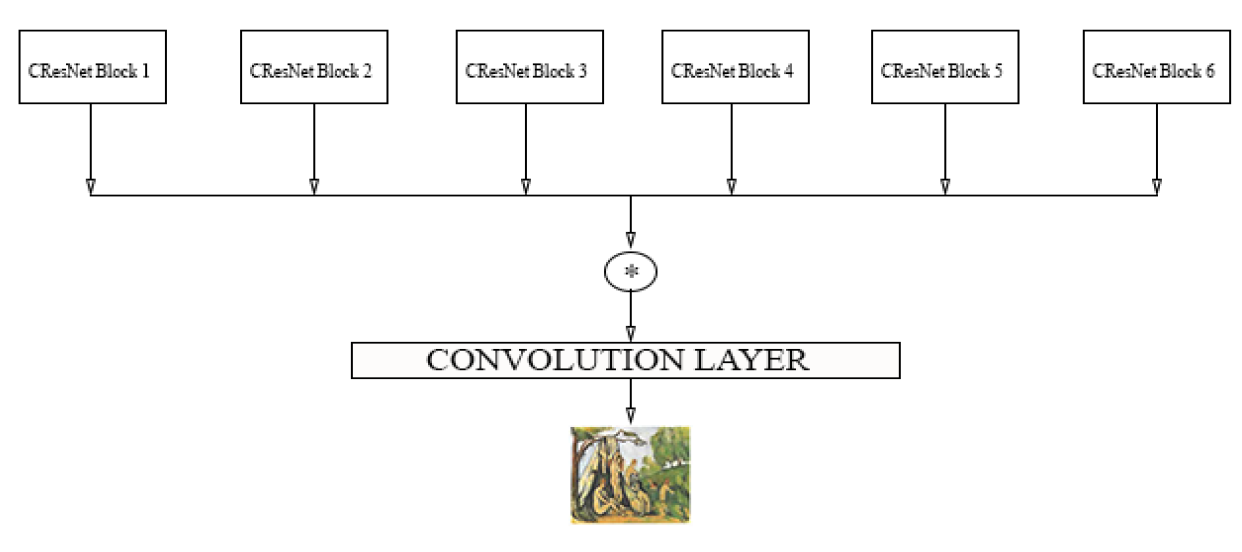 Fig: ArtGAN Network Structure
Fig: ArtGAN Network Structure
 Fig: CResNet Block Structure
Fig: CResNet Block Structure
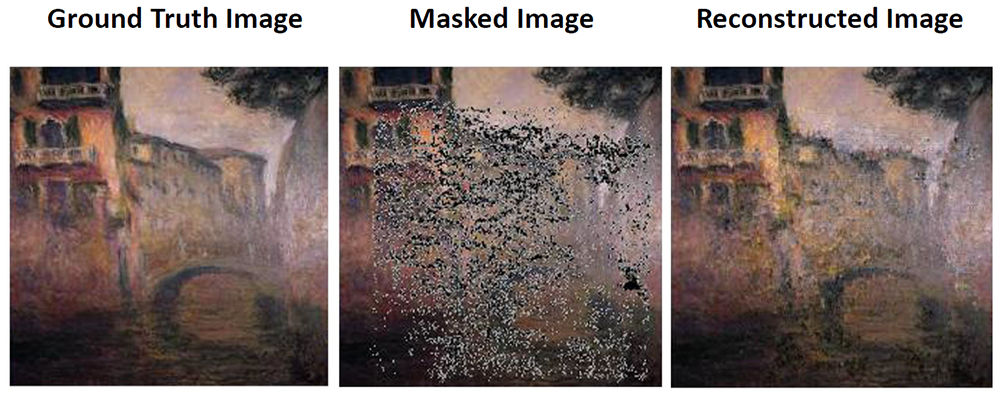 Fig: Sample Output 1
Fig: Sample Output 1
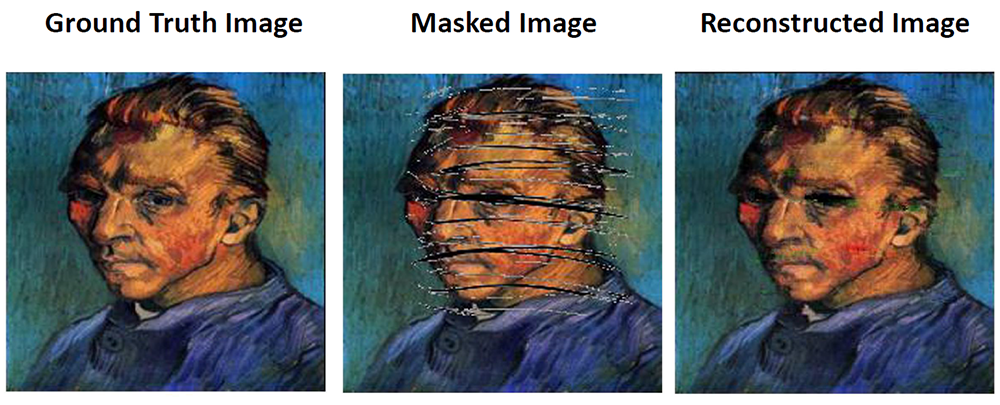 Fig: Sample Output 2
Fig: Sample Output 2
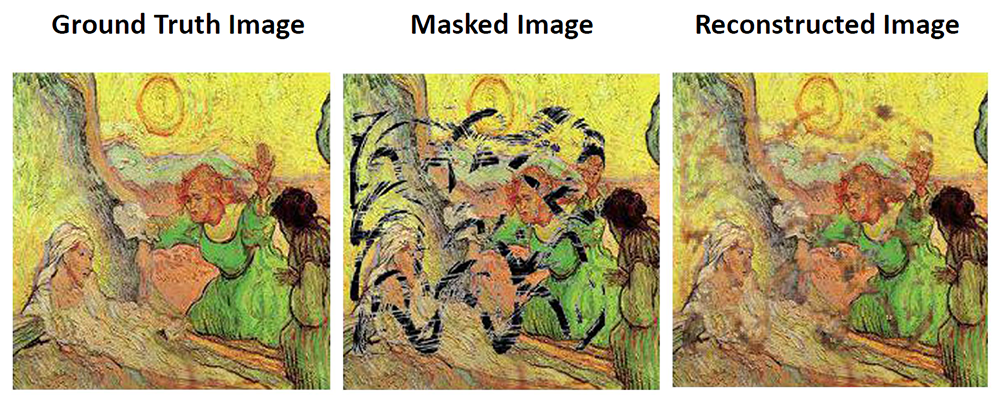 Fig: Sample Output 3
Fig: Sample Output 3
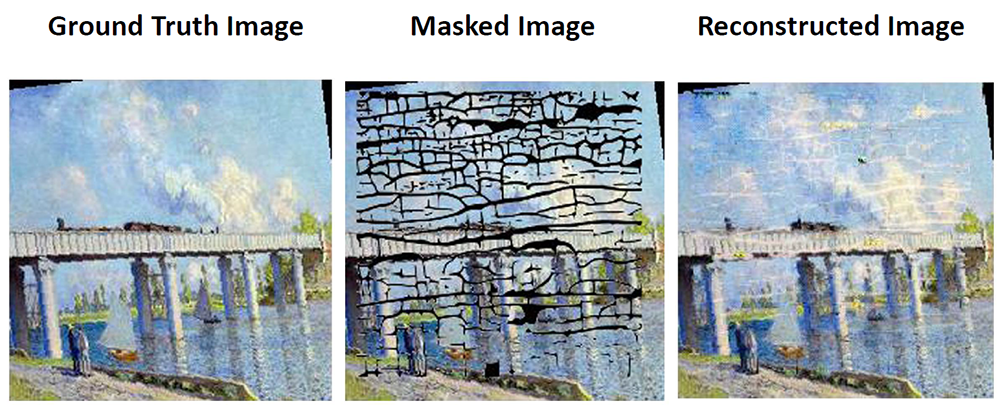 Fig: Sample Output 4
Fig: Sample Output 4
PosEmotion - Combining Real-Time 2D Body Pose Estimation and Facial Emotion Recognition to Analyze Human Behavior
The model first Jointly estimates the human pose using cascaded part confidence heatmaps and the activity of the person. Afterwards, the the facial region is extracted from the detected keypoints and the facial emotion as well as the facial keypoints are detected. The model can make accurate realtime predictions with 20-25 frames per second.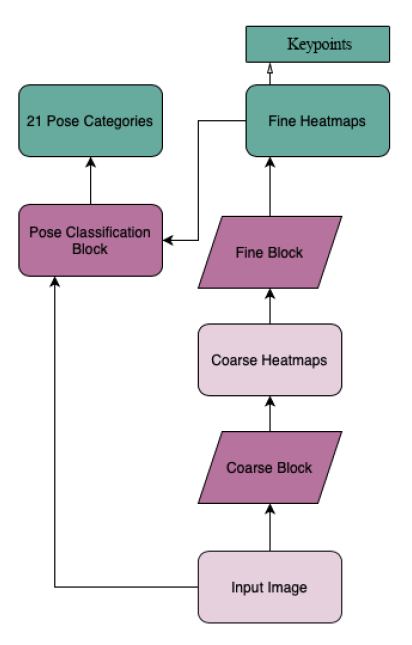 Fig: PosEmotion Network Pipeline
Fig: PosEmotion Network Pipeline
Analysis of Network Pruning with Variable Finetuned Layers on a Pretrained AlexNet Model
Although a pretrained neural network provides a better starting point in most cases, choosing the number of layers to fine tune is a challenge, specially when the dataset is small. I observed the role of fine tuning difierent number of pretrained layers of the AlexNet model and concludes the ideal number of layers for small datasets. Fig: Test ccuracy over 5 runs when different numbers of layers are frozen
Fig: Test ccuracy over 5 runs when different numbers of layers are frozen
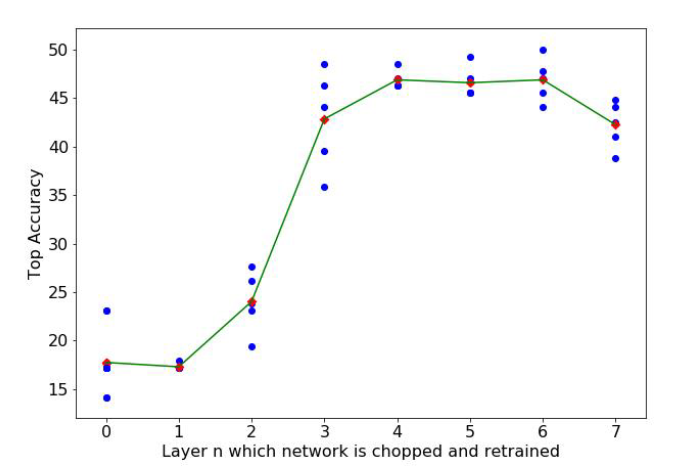 Fig: Test ccuracy of the network as different number of layers are frozen. (Blue – Actual values, Red – Mean values)
Fig: Test ccuracy of the network as different number of layers are frozen. (Blue – Actual values, Red – Mean values)
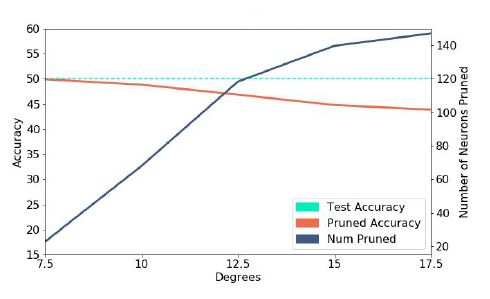 Fig: The networks performance when different angular separation degrees are used
Fig: The networks performance when different angular separation degrees are used